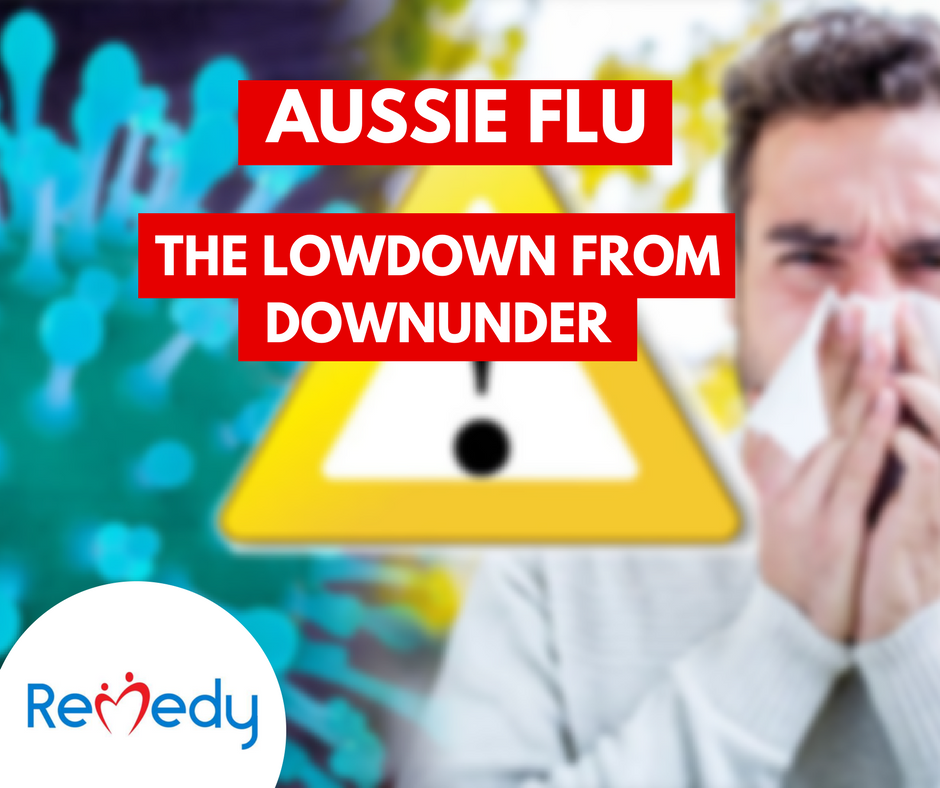Connecting linkedin

Aussie Flu - The Lowdown from Down Under
Whether it was on the tube, at work or socialising with friends we’re sure you’ve heard the term “Aussie Flu” this winter. It seems that everyone has either had it themselves or had to nurse someone who has caught it back to health
Though we are all comfortable speaking about Aussie Flu, how much do we know? I found myself asking people questions like “Why is it called Aussie Flu?” “What makes it different from English Flu?” “How can we determine the origin of the illness? Does it have a passport? How did it get to the U.K.?” Soon realising no one had these answers; I began research so that we would all know what Aussie Flu is, how to identify & treat it, and how to prevent catching and spreading it.
What is Aussie Flu?
One of the strains of flu circulating this year is called H3N2. This strain has coined the phrase Aussie Flu as it caused huge problems in Australia in 2017. The impact H3N2 has had in Australia has been taken as a warning sign by the NHS and other healthcare providers in the UK, as we anticipate a rise in cases. Hospital admissions and GP appointments have had a sharp increase as we entered 2018, but it is still comparable with last winter and far less than the 2008-09 swine flu pandemic. Professor Paul Cosford, Medical Director of Public Health England said “As we would expect at this time of year, flu levels have increased this week. Our data shows that more people are visiting GP’s with flu symptoms and we are seeing more people admitted to hospitals with the flu.”
The UK is seeing many more varieties of flu in recent years. Influenza viruses are named on their category of severity. A is the most serious, B slightly less so and C the mildest of the 3. They are then further subcategorised by the proteins present on their surface (H and N antigens). H3N2 is not a new strain of influenza A virus – it was also present last year, we just heard less about it as there were fewer recorded cases.
H3N2 is an influenza A virus that causes severe infections, particularly in the elderly and young children. In rare cases and for people with health conditions making them vulnerable, the very elderly or infantile H3N2 can be fatal.
What are the symptoms?
The symptoms are much the same as other strains of influenza including:
- Fever (temperature over 38C)
- Aches
- Tiredness or exhaustion
- Dry, chesty cough
- Sore throat
- Headache
- Loss of appetite
- Tummy pain or diarrhoea
- Nausea or sickness
For most people, H3N2 requires no more treatment than rest, paracetamol/ibuprofen and increased fluid intake encouraging recovery within a week or so.
Make an appointment to see your GP if your symptoms don’t improve after 7 days, if you are worried about your child’s symptoms, if you’re 65 years or older, if you are pregnant, if you have a long-term medical condition such as diabetes, heart or lung disease or if you have a weakened immune system due to medical treatment e.g. chemotherapy, HIV therapy etc.
If you have sudden chest pains, difficulty breathing or coughing up blood, call 999 or attend A&E.
How can we prevent it?
Professor Paul Cosgrave said “The vaccine is the best defence we have against the spread of flu and it isn't too late to get vaccinated."
Each year the flu vaccine is designed to protect against the most common and dominant strains. This is determined by experts at World Health Organisation who review the global situation and recommend the flu strains to be included. This year’s flu jab is designed to protect against H3N2 as well as other strains. Public Health England say the flu vaccination is 40-60% effective, and recommend that any at risk people have annual flu jabs to protect them against any new or recurring strains.
The current flu jab is 20-30% effective against H3N2. A spokesman from Public Health England said: "Although we would like this to be higher, this is still a very valuable level of protection against what can be a nasty and sometimes deadly illness."
How can we minimise it spreading?
Flu is very infectious and easily spread to other people. You're more likely to give it to others in the first five days.
Flu is spread by germs from coughs and sneezes, which can live on hands and surfaces for 24 hours.
To reduce the risk of spreading flu wash your hands often with warm water and soap, use tissues to trap germs when you cough or sneeze and bin used tissues as quickly as possible.
